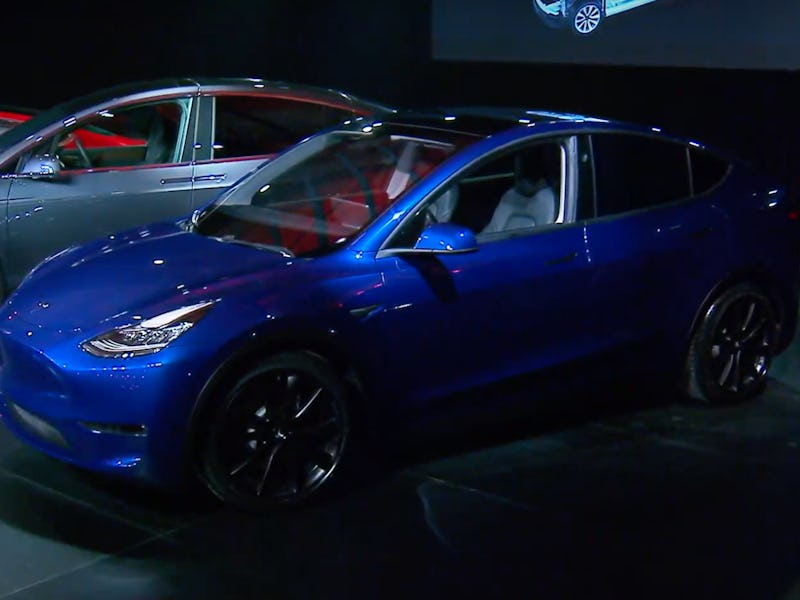Range for the Tesla Model Y is 300 miles, Elon Musk announced on Thursday night from the Tesla Design Studio in Los Angeles shortly after the royal blue vehicle rolled onto the stage after a buildup of more than three years.
The vehicle is made with 75 percent of the same parts as the Model 3, and Musk said it will “be able to do basically anything” as other vehicles in the Tesla fleet, thanks to software updates.
The Long Range Model Y will be $47,000, will have that aforementioned 300-mile range, and be delivered to customers in the fall of 2020.
In 2021, the Standard Range model — 230 miles between charges — will cost $39,000 and be available for sale.
“I’m confident that of any mid-size SUV, it will be the one you want,” Musk said, adding he projects that Model Y sales will be more than S, X, and 3 models combined.
The specs for the Tesla Model Y, released on Thursday night.
The Model Y will come with Tesla Autopilot self-driving hardware and software, Musk said, doubling down on a projection he made in January that Teslas will be able to fully drive themselves by the end of this year.
“We expect to be ‘feature-complete’ with self-driving sometime later this year. And as we prove out the safety with billions of miles, kilometers, we will feel like it’s safe enough to not pay attention, and get the regulatory approval sometime thereafter,” Musk said.
The Model Y seats up to seven people, has a glass roof like the Model 3, and the Standard Range model goes 0-60 mph in just under six seconds. As with the Model 3, the more expensive versions of the Model Y will be available first, with the lower-priced options becoming available later.
“It’s been a hell of a ride,” Musk said at the end of the presentation that also included a history of Tesla and all its products delivered to date. But it seems that the ride is only getting started.
Musk and the Model Y
Earlier reports note that Tesla plans to produce somewhere around 1 million Model Y vehicles per year, far more than the company’s total all-time deliveries in the United States alone. The company’s Chinese Gigafactory will play a big role in this: The 210-acre site in Lingang, a district in the southeast of Shanghai, will produce 250,000 cars per year, covering both Model 3 and Model Y.
One major issue that Tesla will be keen to avoid is the “production hell” that plagued the Model 3. A recent report revealed how Musk came to executives at the start of production and described an “alien dreadnought” factory, with robots seamlessly shifting parts at speed to fire out cars. Unfortunately, this highly automated factory produced just over 200 cars in the last quarter of 2017 despite plans to produce 5,000 per week by December, and in April 2018, the company had radically shifted course to incorporate more humans in the process. Musk would later describe excessive automation as a “mistake” and humans as “underrated.”
“I’m pretty excited about how we’re designing Model Y. It’s really taking a lot of lessons learned from Model 3 and saying, ‘How do we design this thing to be easy to manufacture instead of difficult?’” Musk said during a February call with investors. The result of those lessons made its debut on Thursday.
With reporting by Mike Brown.
